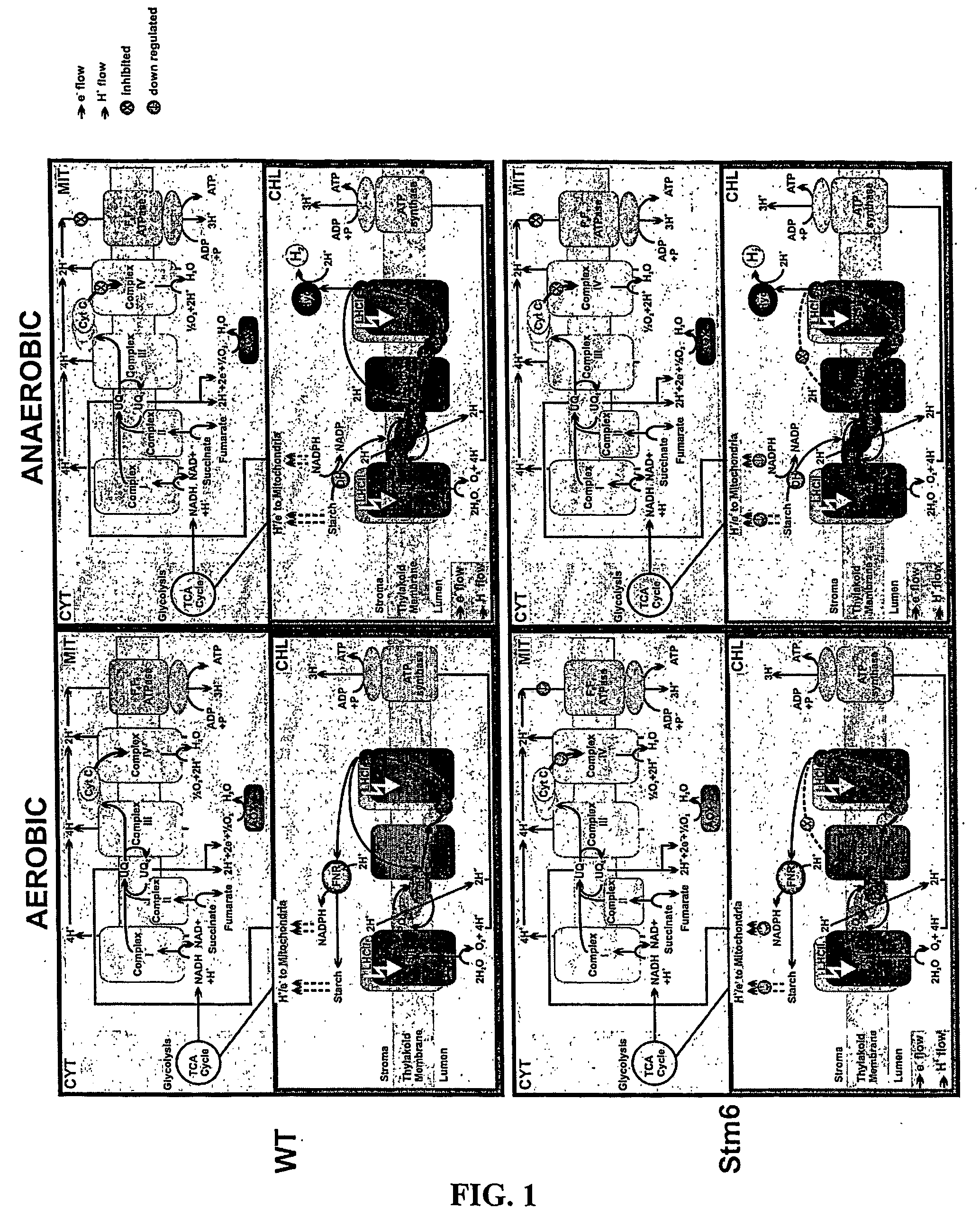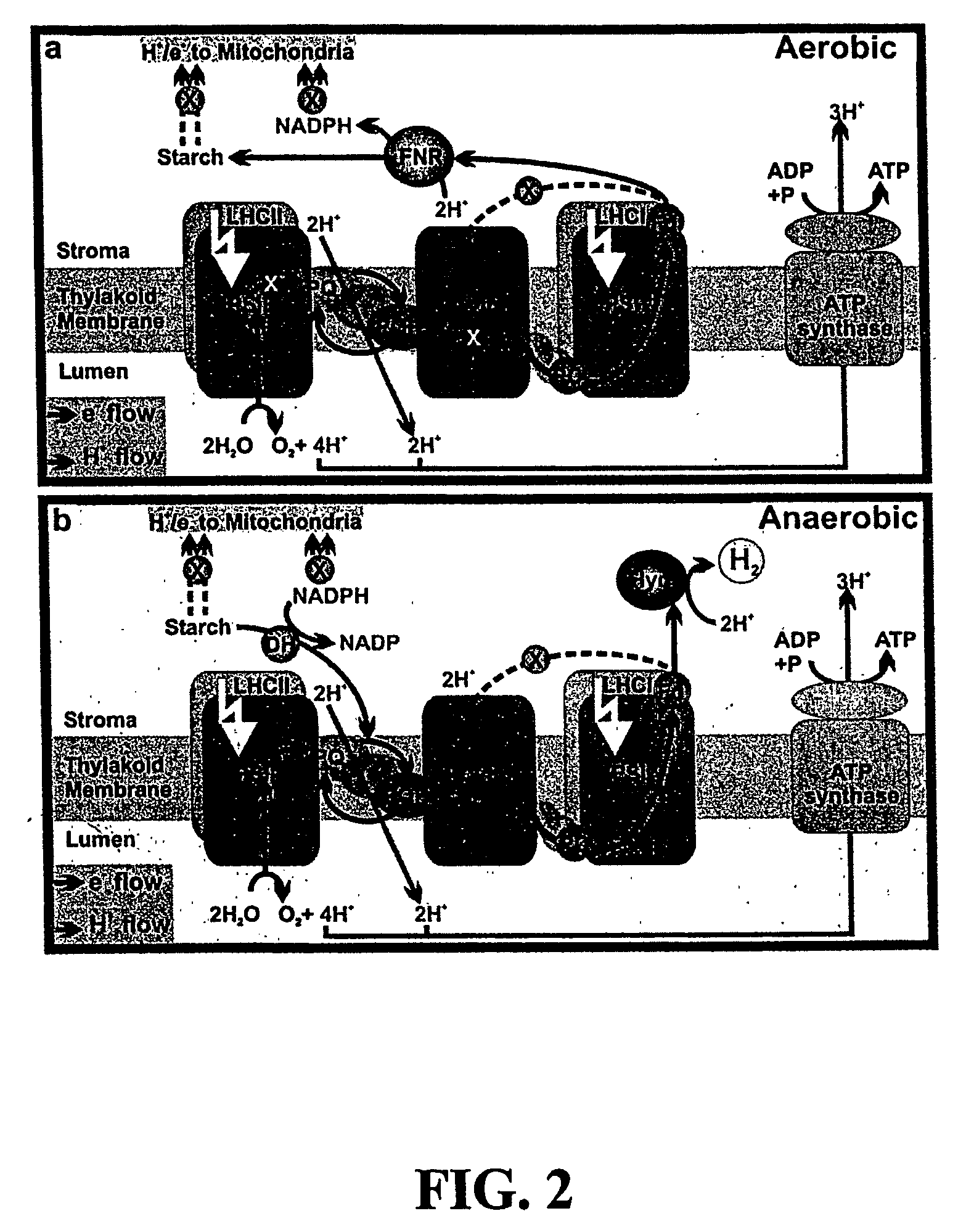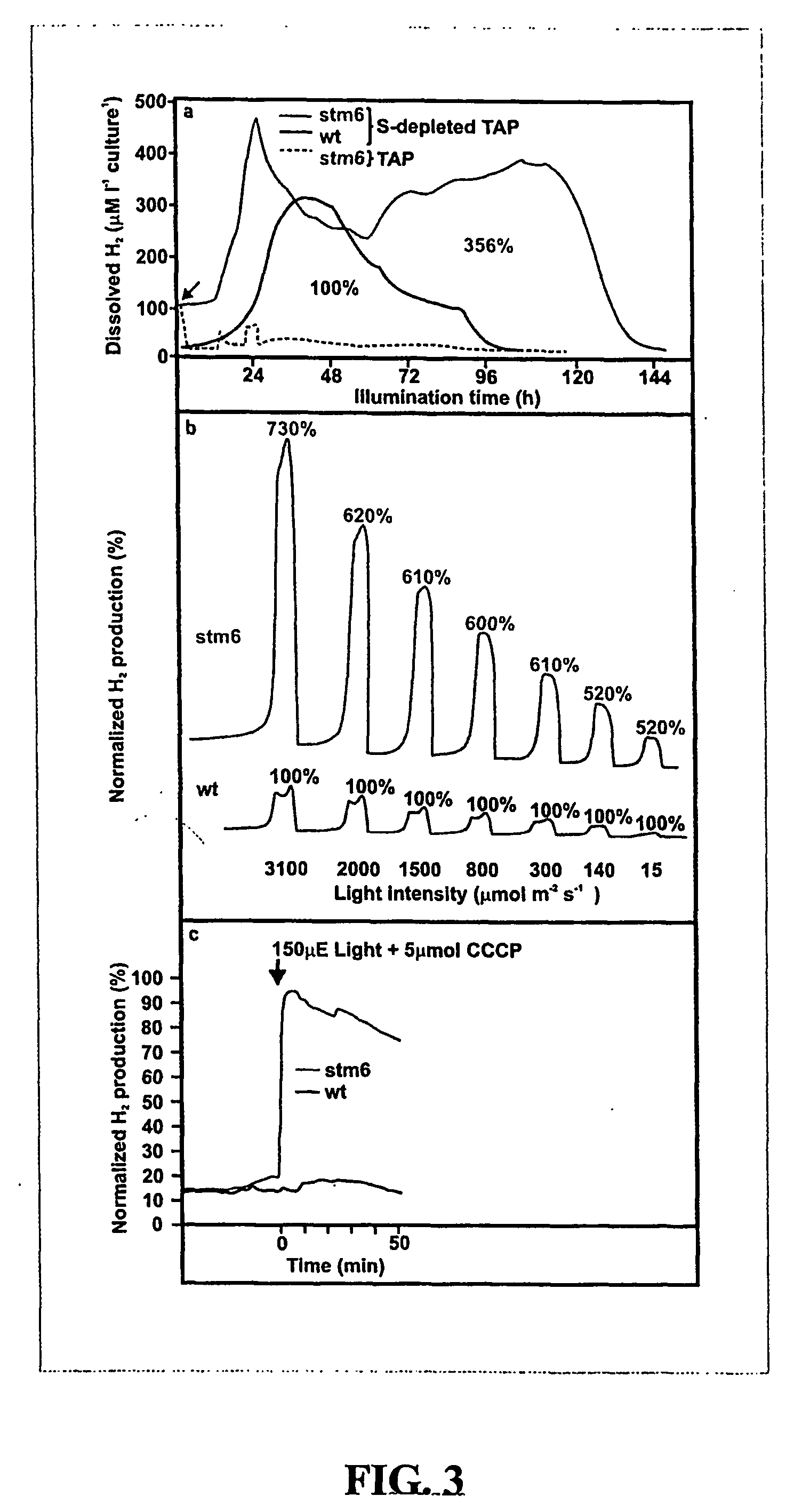Photosynthetic hydrogen production
- Summary
- Abstract
- Description
- Claims
- Application Information
AI Technical Summary
Benefits of technology
Problems solved by technology
Method used
Image
Examples
example 1
Isolation of Mutant Strains
Strains and Culture Conditions
[0102] The Chlamydomonas reinhardtii strains WT13 and CC 1618 (arg7 cw15, mt−) were obtained from the Chlamydomonas Genetics Center Collection (Duke University, USA). All strains used were cultivated mixotrophically in TAP medium (Tris-acetate-phosphate, pH 7.0) by illumination with 40 μmol m−2 sec−1 white light at 20° C. (Harris 1989) in a twelve hours light-dark cycle to a cell density of 2×106 cells per ml.
[0103] When required (for the arginine auxotroph strain CC1618) the medium was supplemented with 110 μg arginine per ml.
Mutant Construction and Genetic Analysis
[0104] Nuclear transformation was performed as described following the methods of (Kindle et al., 1989) and (Purton and Rochaix, 1995).
[0105] Plasmids pARG7.8, containing a 7.8 kb genomic DNA fragment of the Chlamydomonas reinhardtii argininosuccinate lyase gene (Debuchy et al. 1989) and a 0.4 kb fragment of bacteriophage φX174 DNA (Gumpel and Purton 1994),...
example 2
Hydrogen Evolution Measurements
[0111] H2 concentrations were measured in the liquid phase and the gaseous head space above, both for WT and Stm6 cultures (cell density of OD750 nm=0.8). Dissolved H2 concentrations were measured in 1 litre dark-adapted cell cultures in TAP medium replete with, or depleted of, sulfur using a Clark type hydrogen electrode (Unisense PA2000, Denmark) upon white light illumination. H2 concentrations in the presence and absence of 5 μM carbonylcyanide m-chlorophenylhydrazone (CCCP) were measured using dark adapted cultures (1 h) before and after illumination (white light, 300 μmol m−2. s−1) The H2 concentration in the gaseous head space was measured using a mass spectrometer (Delta Finnigan MAT). Cell cultures were dark-adapted for 30 min in a weak vacuum to deplete the medium and headspace of O2 and H2, prior to illumination with continuous or pulsed (3.3 Hz frequency, 5 μs flashes; light intensity range of 15-3000 μmol.m−2.s−1) white light.
[0112] With ...
example 3
Measurement of the Evolved Gas Volume during Photosynthetic H2 Production
[0115] Aim: To determine the volume and composition of gas evolved by Stm6 during photosynthetic H2 production.
[0116] Method: The experiment was conducted under white light (80 μmol.m−2.s−1). The culture was incubated in dark under sulphur deprived conditions for 40 hrs. The cells were grown in TAP medium supplemented with acetate as an additional carbon source, to an OD750 (optical density at 750 nm) of ˜1.0. The culture volume was 300 ml; the data for the gas evolved is normalized to 1 liter culture. Hydrogen was measured using an Agilent Micro gas chromatograph.
Mutant (Stm6)Gas volumeGasH2Totalin totalvolumeproportionrunningCultureL [ml][ml] / hr[%]timeStm6-S169.750.9976%>69 hrs
PUM
| Property | Measurement | Unit |
|---|---|---|
| Time | aaaaa | aaaaa |
| Transport properties | aaaaa | aaaaa |
| Level | aaaaa | aaaaa |
Abstract
Description
Claims
Application Information
 Login to View More
Login to View More - R&D
- Intellectual Property
- Life Sciences
- Materials
- Tech Scout
- Unparalleled Data Quality
- Higher Quality Content
- 60% Fewer Hallucinations
Browse by: Latest US Patents, China's latest patents, Technical Efficacy Thesaurus, Application Domain, Technology Topic, Popular Technical Reports.
© 2025 PatSnap. All rights reserved.Legal|Privacy policy|Modern Slavery Act Transparency Statement|Sitemap|About US| Contact US: help@patsnap.com



